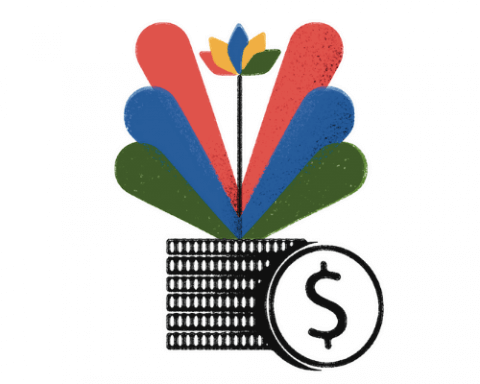Sustainability is increasingly a mainstream business concern, with mounting pressure to tackle the climate crisis coming from the top down and the bottom up.
This past year saw the publication of two startling reports from the Intergovernmental Panel on Climate Change (IPCC), warning of the worsening impacts of climate change threatening food supplies, infrastructure and already fragile global water supplies. At the same time, the United Nations reported that the “emissions gap” – the gap between the greenhouse-gas (GHG) emissions that will limit temperature increases to the 1.5C that climate scientists say is safe and the GHGs that we are actually emitting – is growing.
With nations failing to make progress at the COP25 climate talks in Madrid in December, corporate action on the climate has never been more important.
If the 2010s were the decade when business started to realize the dangers of climate change and the impact it could have on their operations, the 2020s must be the decade when they act to dramatically reduce the emissions that cause it.
The shift is reflected in the growing influence of initiatives such as the Task Force on Climate-Related Financial Disclosures (TCFD), which calls on companies to disclose their climate risks and how they intend to tackle them. The physical risks are becoming more obvious, in the form of stronger hurricanes, weeks-long wildfires in locations from California to Australia, record temperatures from the Arctic to Africa, and rising sea levels. TCFD also asks that companies quantify the financial and non-financial impacts of the low-carbon transition (on reputation, policy, technology, etc.).
The COP25 talks in Madrid highlighted the challenges that businesses will face from an uneven and divergent pace of change – countries such as the U.S., Australia and Brazil resisted introducing stricter measures, while the European Union, the world’s largest trading bloc, announced that it planned to become “climate neutral” by 2050, meaning that some 40% of global GDP is now covered by net-zero commitments.
The science tells us that bigger emissions cuts are needed as the impacts of the climate crisis become ever more apparent and alarming. According to KPMG, “Governments that are seen as lagging at the moment may be forced to implement more stringent policies more rapidly in the future.”
The past year has also seen a wave of grassroots protests around the world against climate inaction, including by Extinction Rebellion activists and hundreds of thousands of students inspired by Swedish teenager Greta Thunberg’s “striking for climate.” The world’s future consumers and voters are increasingly intolerant of failure to tackle climate-change and social-justice issues. Business and investors are starting to take notice and come to grips with what the crisis could mean for their future prospects.
It is no accident that the biggest grouping in the Global 100 is financial services companies – investors, insurers and lenders are often ahead of the game when it comes to acknowledging where the risks of failing to deal with sustainability issues lie.
Business and investors are starting to take notice and come to grips with what the crisis could mean for their future prospects.
That is why they encourage companies to disclose their emissions and their climate strategies through bodies such as TCFD and CDP (formerly the Carbon Disclosure Project). It’s also why, aided by technology in the form of big data and artificial intelligence, they are increasingly focused in their engagements with companies – for example through the Climate Action 100+ initiative that targets the world’s biggest emitters and those “with significant opportunity to drive the clean energy transition.”
The leader of this year’s Global 100, Ørsted, is a perfect example of a company that has identified the way the world is changing, spotted an opportunity to gain a competitive advantage and reshaped its business strategy accordingly.
Many other businesses are reacting by signing up to initiatives such as Science Based Targets, which calls for companies to set targets in line with the scale of reductions needed to keep average temperature rises below 2C, and RE100, whereby corporations commit to procure all their electricity from renewable sources.
Renewable energy and associated technologies such as batteries and electric vehicles are becoming cheaper and more competitive every day, making it easier for companies to make the sustainable choice.
While relatively few companies have committed to these initiatives, those that have are among the biggest corporations in the world, and their efforts to meet their own targets will encourage their suppliers to become more sustainable in turn.
The drivers for companies to become more sustainable are coming from everywhere – the science, initiatives from governments and regulators, increased consumer pressure and demands from investors. The best-prepared businesses see opportunities as well as risks and are preparing accordingly.
Who made this year’s list? The 2020 Global 100 ranking
Return to Global 100 landing page






